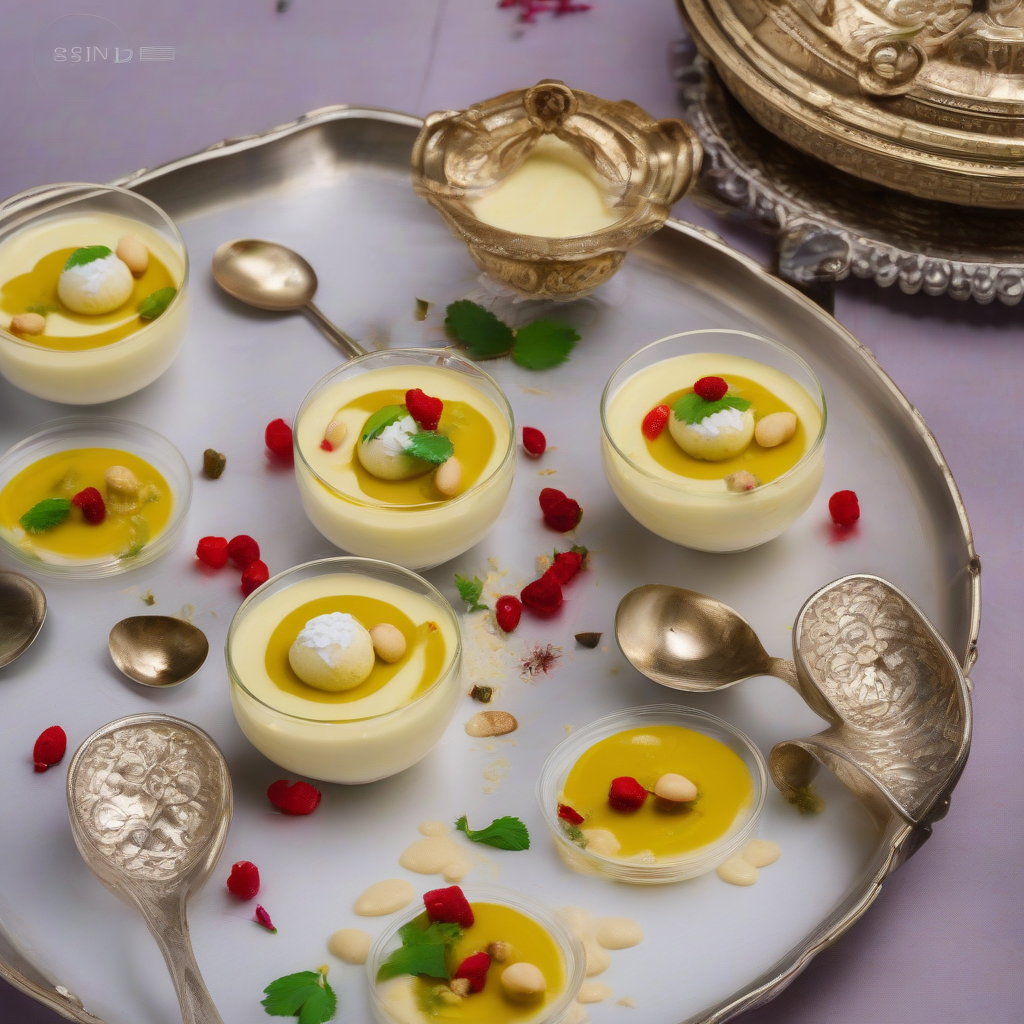Aye Mere Deshwasiyon! Let’s Make Rasmalai, Boss!
Namaste, Sat Sri Akal, Kem Cho, and Vanakkam, my foodie friends! Chef Curry Do’pyaza here, ready to share a sweet secret with you all. Today, we are diving headfirst into the creamy, dreamy world of Rasmalai with Rabri. This is not just a dessert; it’s an experience, a hug in a bowl, a celebration of all things sweet and wonderful!
Rasmalai is a dish that brings back fond memories of festive times with family and friends.
When do we whip this up?
Think Diwali, Holi, Eid, Raksha Bandhan, or even a simple Sunday family lunch. This is the dessert that makes any occasion feel extra special. It’s a perfect dish for the winter months when you crave something warm and comforting, but honestly, who needs an excuse for Rasmalai?
A Little History Lesson (Don’t worry, it’s short!)
Rasmalai originated in Bengal, India. The name itself tells a story: “Ras” means juice, and “Malai” means cream. So, it’s literally “juice of cream”! It’s believed that K.C. Das Grandsons invented the canned version of Rasmalai, making this delectable treat accessible to everyone. It’s a dish steeped in tradition and love.
The Recipe: Rasmalai with Rabri
Okay, enough chit-chat! Let’s get cooking!
- Preparation Time: 30 minutes
- Cooking Time: 60 minutes
Ingredients:
- For the Rasmalai (Cheese Patties):
- Paneer (Indian Cottage Cheese) – 200 grams (fresh, crumbled)
- Maida (All-Purpose Flour) – 1 tablespoon
- Chini (Sugar) – 2 tablespoons
- Elaichi Powder (Cardamom Powder) – 1/4 teaspoon
- For the Sugar Syrup:
- Chini (Sugar) – 1 cup
- Pani (Water) – 4 cups
- Gulab Jal (Rose Water) – 1 teaspoon (optional, for a fragrant touch)
- For the Rabri (Sweetened Condensed Milk):
- Dudh (Full Cream Milk) – 1 liter
- Chini (Sugar) – 1/2 cup (adjust to taste)
- Kesar (Saffron Strands) – a pinch, soaked in 2 tablespoons of warm milk
- Elaichi Powder (Cardamom Powder) – 1/4 teaspoon
- Badam (Almonds) – 10-12, slivered for garnish
- Pista (Pistachios) – 10-12, slivered for garnish
Step-by-Step Instructions:
- Make the Paneer Dough: Mash the paneer until it is smooth and free of lumps. Add maida and elaichi powder. Knead gently to form a soft, pliable dough. Do not over-knead!
- Shape the Rasmalai: Divide the dough into small, equal portions. Roll each portion into a smooth ball and then flatten it slightly into a disc shape. They should be about 1-inch in diameter.
- Prepare the Sugar Syrup: In a wide, heavy-bottomed pan, combine chini and pani. Bring to a boil over medium heat, stirring until the chini dissolves completely. Add gulab jal (if using).
- Cook the Rasmalai: Gently drop the paneer discs into the boiling sugar syrup. Cover the pan and cook for about 15-20 minutes. The paneer discs will puff up and become spongy.
- Make the Rabri: While the paneer discs are cooking, let’s make the rabri. In a large, heavy-bottomed pan, bring the dudh to a boil over medium heat.
- Simmer the Rabri: Reduce the heat to low and simmer the dudh, stirring frequently, until it reduces to about half its original volume. This will take about 45-60 minutes. Be patient!
- Sweeten and Flavor the Rabri: Add chini, kesar (with the milk it was soaked in), and elaichi powder to the simmering rabri. Stir well and cook for another 5-10 minutes. The rabri should be thick and creamy.
- Assemble the Rasmalai: Once the paneer discs are cooked, gently remove them from the sugar syrup and squeeze out any excess syrup. Carefully place the paneer discs into the warm rabri.
- Chill and Serve: Allow the rasmalai to soak in the rabri for at least 2-3 hours in the refrigerator. This allows the flavors to meld together beautifully.
- Garnish with badam and pista before serving.
Chef Curry’s Top Tips for the Best Rasmalai:
- Fresh Paneer is Key: Use the freshest paneer you can find for the best texture.
- Gentle Hands: Be gentle when kneading the paneer dough to avoid making it tough.
- Don’t Overcook: Do not overcook the paneer discs in the sugar syrup, or they will become hard.
- Patience is a Virtue: The rabri requires patience, but the results are worth it!
- Chill Out: Chilling the rasmalai before serving is essential for the flavors to develop fully.
Cooking Variations:
- Gas Stove: The traditional method, perfect for simmering the rabri slowly.
- Induction Stove: Works just as well as a gas stove, providing precise temperature control.
- Pressure Cooker (Not Recommended): It’s best to avoid using a pressure cooker for this recipe, as it can be difficult to control the cooking process.
- Oven (Not Recommended): Oven is not suitable for this recipe.
- Microwave (Not Recommended): The microwave is not ideal for making rasmalai.
- Air Fryer (Not Recommended): Air fryer is not suitable for this recipe.
- Slow Cooker/Crockpot (For Rabri): You can use a slow cooker to make the rabri. Cook on low for 6-8 hours, stirring occasionally.
Nutritional Information (Approximate, per serving):
- Calories: 350-400
- Protein: 15-20g
- Fat: 20-25g
- Carbohydrates: 30-35g
Serving Suggestions:
- Serve chilled as a dessert after a delicious Indian meal.
- Garnish with extra badam and pista for a festive touch.
- A scoop of vanilla ice cream on top is a delightful addition!
Now, it’s your turn!
Go ahead, try this recipe at home. Surprise your family and friends with this amazing dessert. Share the joy of Rasmalai with your loved ones. They will surely sing your praises!
Until next time, happy cooking!
Your friend,
Chef Curry Do’pyaza
